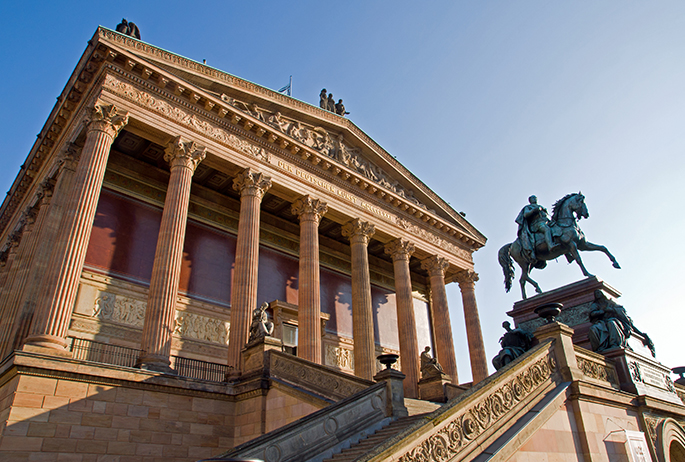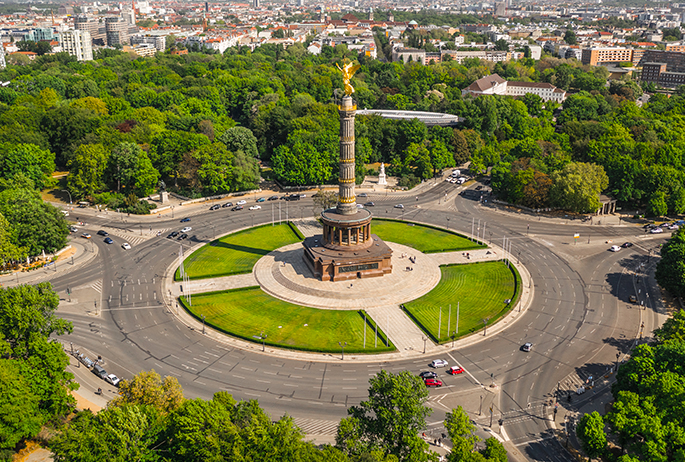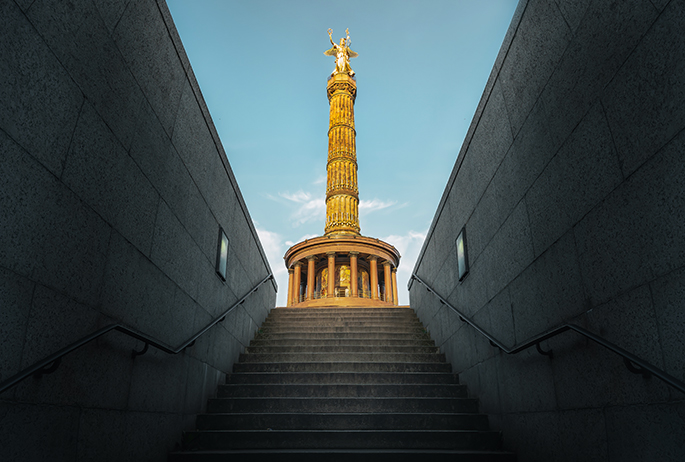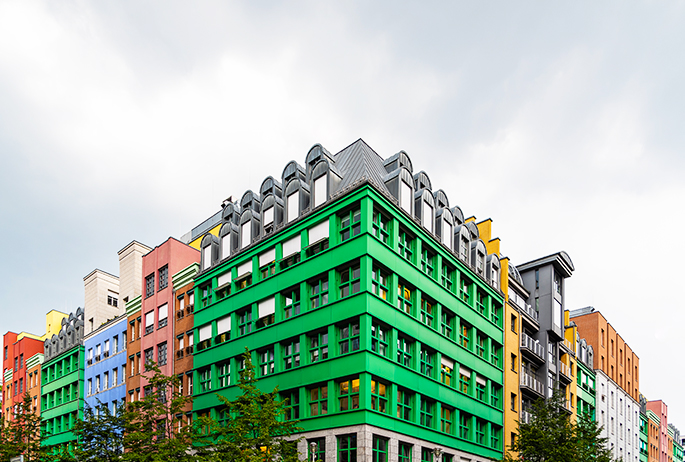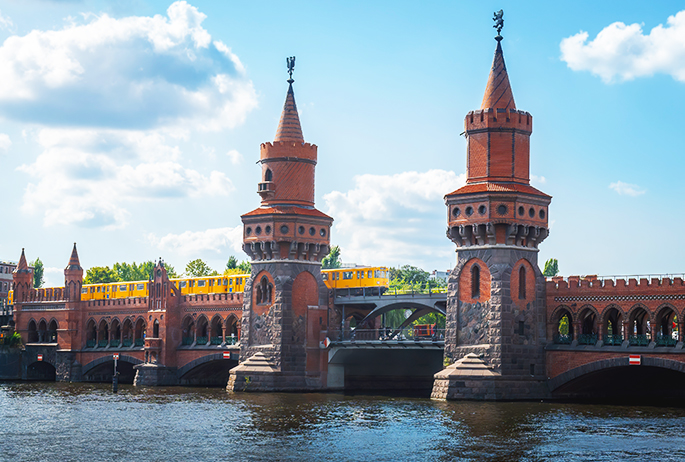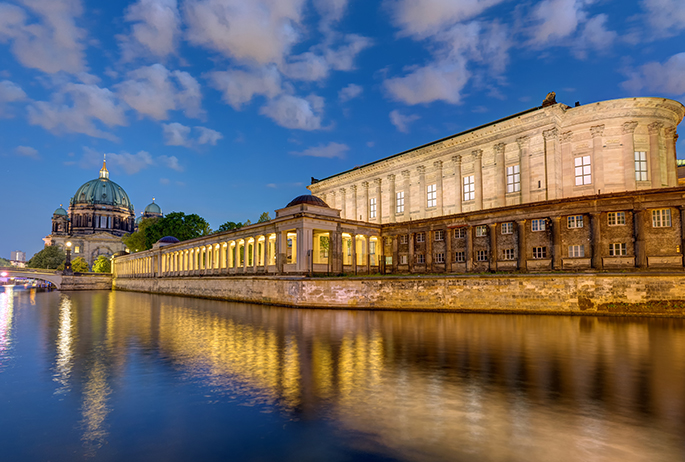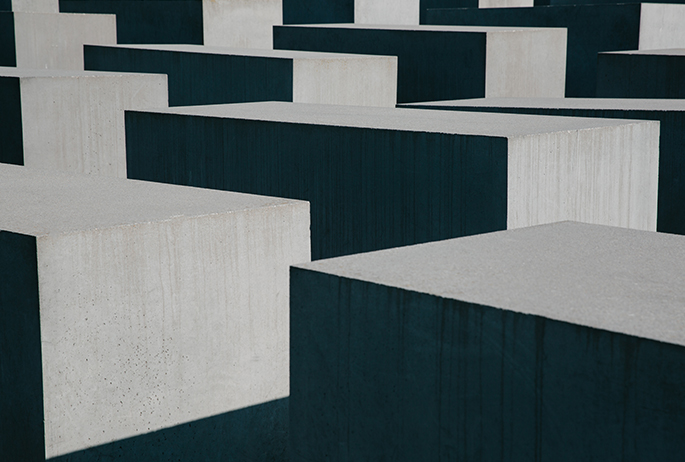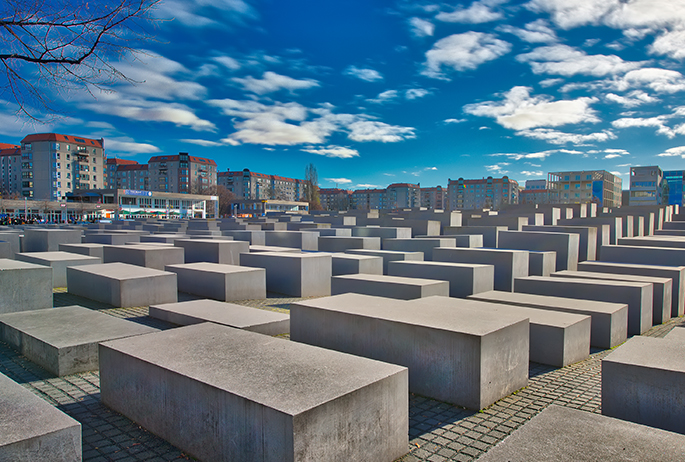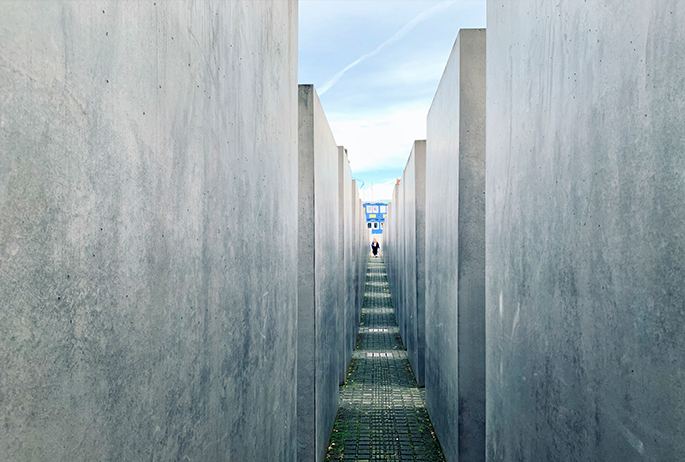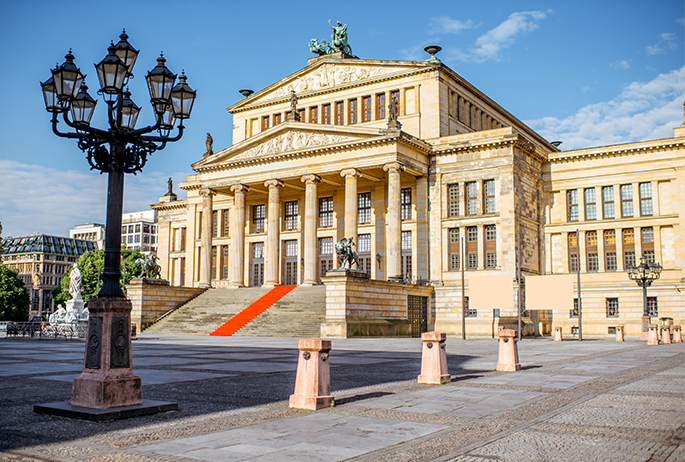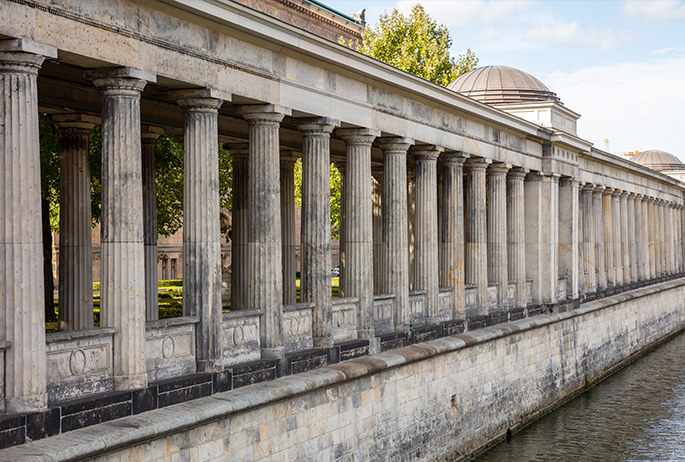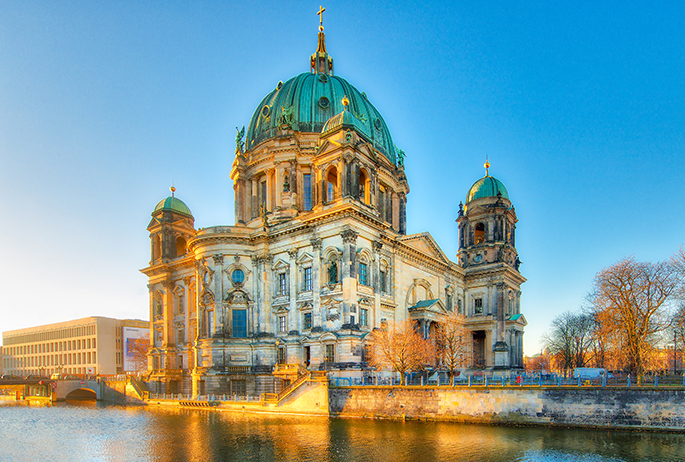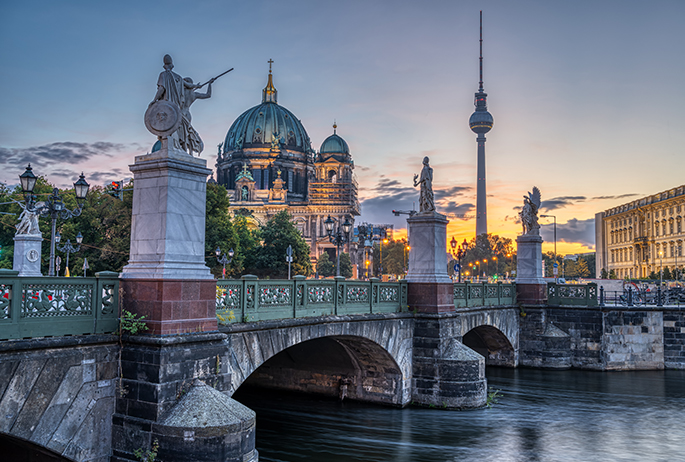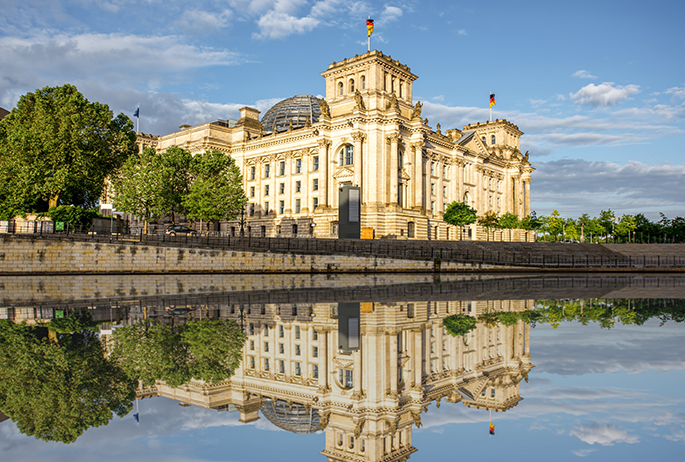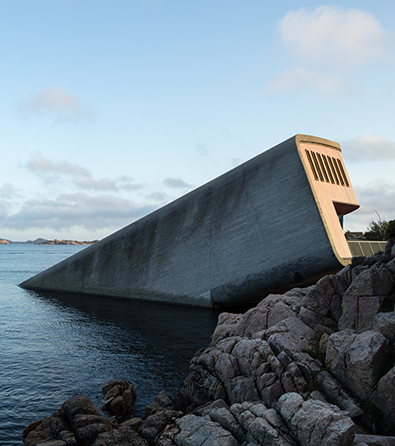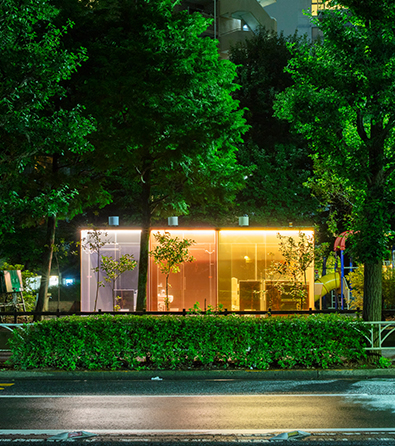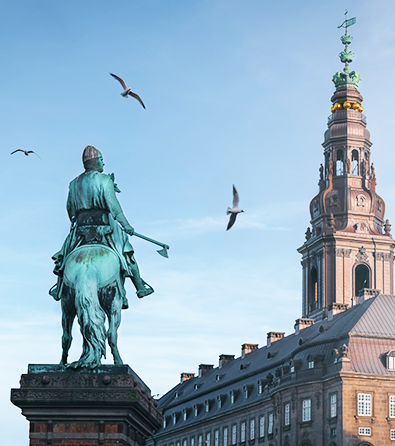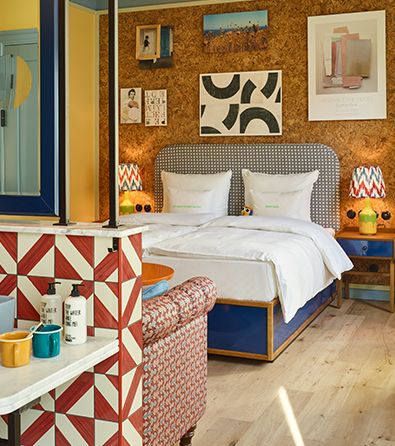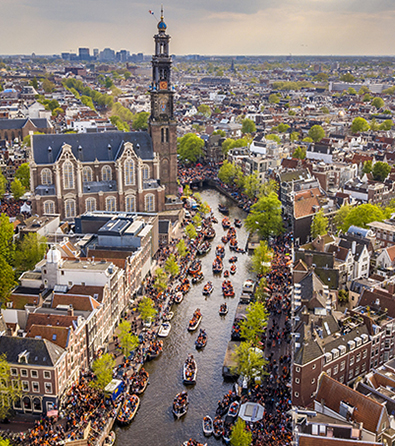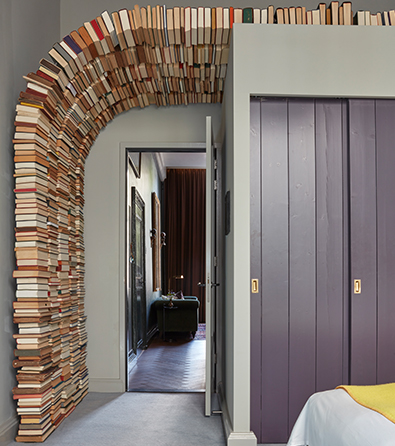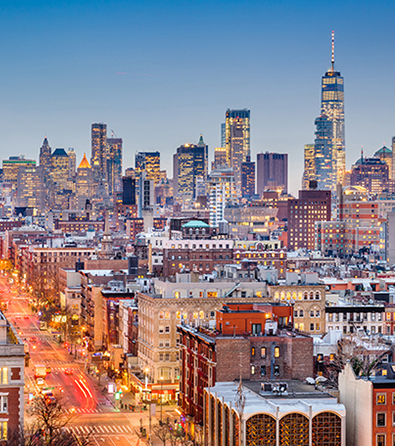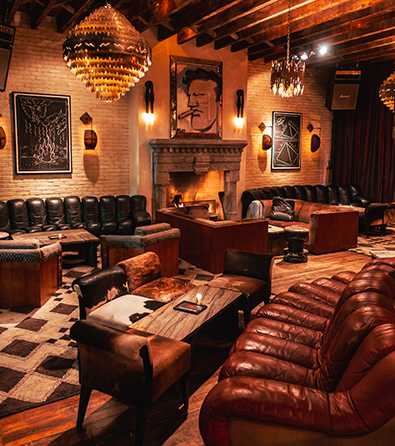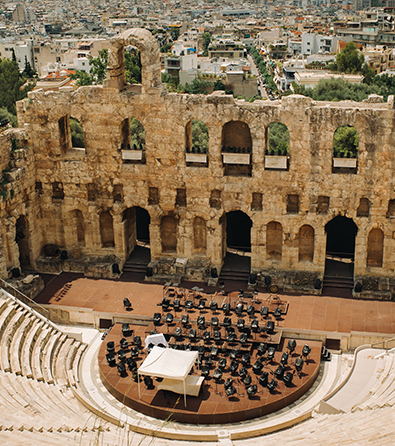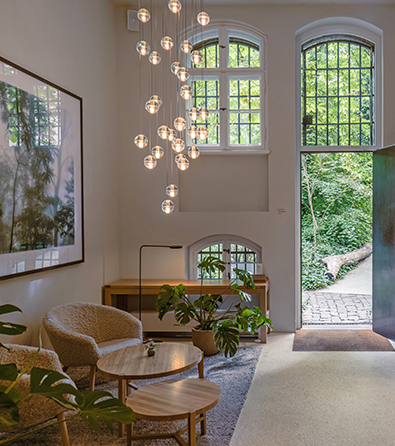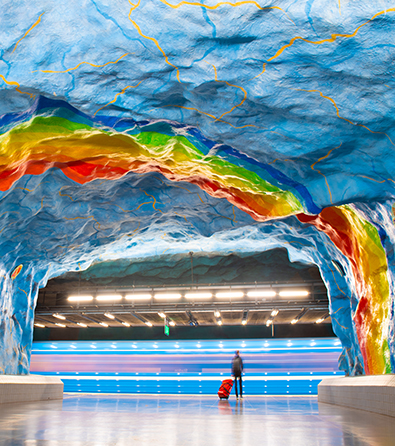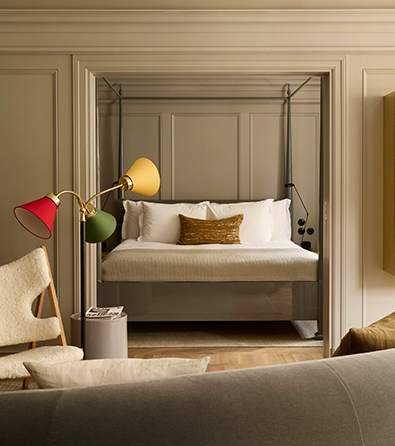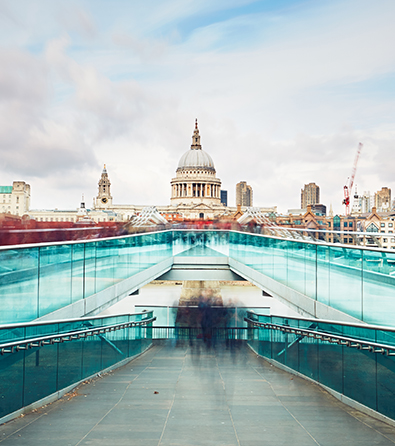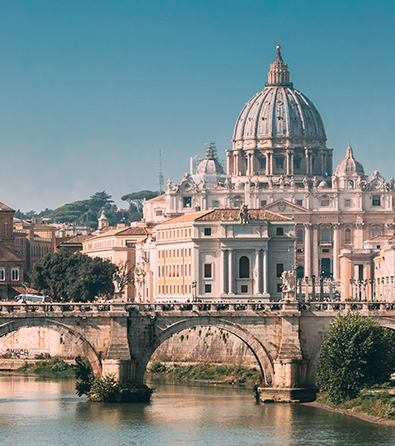Berlin’s visible history is infused with its thriving creative scene of world-class museums, contemporary galleries, street art, design shops and concept stores, architecture icons, theaters, and citywide festivals. Use this guide to plan a culture-first trip: Museum Island masterpieces; contemporary hubs like Hamburger Bahnhof and KW; gallery districts in Mitte and Kreuzberg; street-art corridors from the East Side Gallery to hidden courtyards; architecture highlights such as the Neue Nationalgalerie and Tempelhof; plus seasonal fixtures like Gallery Weekend in May and Berlin Art Week in September, neighborhood loops, practical tips, and a downloadable map.
To access our exclusive Berlin Treasure Map, simply click the attached link and become a Culture Treasures member. The map pins every place in this guide and adds bonus cafés, boutiques and cultural venues. Planning your stay? Explore our curated design-hotel picks for Berlin, our urban travel essentials for getting around, and our long flight essentials for a smoother journey.
Art Museums and Galleries:
Museum Island (Mitte / Spreeinsel)
Why go: UNESCO-listed ensemble of five major museums that trace art and archaeology from antiquity to the 19th century, home to the Nefertiti bust, world-class sculpture, and landmark reconstructions.
Tip: Start at the James-Simon-Galerie (the island’s ticketing/entry hub). The Pergamon Museum is closed for major refurbishment; its North Wing and Pergamon Altar hall are expected to reopen in spring 2027. Reserve the Neues Museum if you want to see Nefertiti.
Museum Island gathers: Altes Museum, dedicated to classical antiquities with Greek and Roman art; Neues Museum, housing the Egyptian Museum and Papyrus Collection (including the iconic Nefertiti bust) and prehistory/early history; Alte Nationalgalerie, focused on 19th-century art from Neoclassicism and Romanticism to Impressionism and early Modernism; Bode Museum, known for European sculpture from the Middle Ages to the 18th century, the Museum of Byzantine Art, and the Coin Cabinet; and Pergamon Museum, famous for monumental reconstructions such as the Ishtar Gate and Market Gate of Miletus (currently closed during the refurbishment). Together they offer a compact journey through time, art, and architecture in the heart of Berlin.
Berlinische Galerie (Kreuzberg / Alte Jakobstraße)
Why go: Museum of modern art, photography, and architecture made in Berlin, spanning 1870 to today, strong in Dada Berlin, New Objectivity, and art of the divided and reunified city.
Tip: Open Wednesday to Monday 10:00–18:00 (closed Tuesday). Under-18s are free; “Happy Wednesday” offers €6 admission on the first Wednesday of each month. Pair with the nearby Jewish Museum and a Kreuzberg gallery stroll.
Founded in 1975, the Berlinische Galerie focuses on art created in Berlin across media, painting, sculpture, works on paper, photography, and architecture. Since 2004 it has occupied a converted 1960s glass warehouse, giving spacious, flexible galleries for rotating shows that connect Berlin’s past to its contemporary scene.
Hamburger Bahnhof – Nationalgalerie der Gegenwart (Moabit / Invalidenstraße, near Hauptbahnhof)
Why go: Berlin’s flagship museum for contemporary art inside a 19th-century railway terminus, major holdings from the Nationalgalerie (with the Marx and Marzona collections), immersive installations, and big rotating shows.
Tip: Closed Monday; late hours Thursday. Enter via Invalidenstraße 50 and leave time to wander the permanent “Endless Exhibition” works indoors and outside.
Opened as a museum in 1996 in the former Hamburg–Berlin terminus, Hamburger Bahnhof presents art from about 1960 to today, painting, sculpture, film/video, and environment-scale installations. The program draws on the Nationalgalerie’s collections (including the long-standing Marx Collection and the Marzona Collection of Conceptual/Land/Minimal art) and special exhibitions. A prior long-term loan of the Friedrich Christian Flick Collection ended in 2021, though 268 donated works from that collection remain part of the Nationalgalerie. The state’s 2022 purchase of the building complex secured the museum’s long-term future and expansion plans.
Sammlung Boros (Mitte / Reinhardtstraße Bunker)
Why go: Guided tours of a private contemporary art collection installed in a World War II high-rise bunker, raw concrete spaces juxtaposed with site-specific works by leading international artists.
Tip: Visits are by timed, small-group tour only and often sell out. Tours run in German and English and last about 90 minutes; book ahead.
Opened to the public in 2008 after a conversion by architect Jens Casper, the former air-raid bunker, later nicknamed the “banana bunker” when it stored tropical fruit, now presents rotating multi-year installations drawn from the collection of Christian and Karen Boros. The current fourth presentation (on view since 2022) continues the museum-scale approach, with past lineups including artists such as Olafur Eliasson, Ai Weiwei, Wolfgang Tillmans, Alicja Kwade, and Rirkrit Tiravanija. The address is Reinhardtstraße 20 in Mitte, a short walk from Berlin Hauptbahnhof/Friedrichstraße.
KW Institute for Contemporary Art (Mitte / Auguststraße 69)
Why go: Groundbreaking exhibitions, performances, and public programs in a former margarine factory, an anchor of Berlin’s contemporary scene and frequent home base for the Berlin Biennale.
Tip: Open Wed–Mon 11:00–19:00 (Thu to 21:00), Tue closed. Tickets are sold on site by card only. Pair your visit with the Auguststraße gallery mile and a pause at Café Bravo in the courtyard.
Founded in 1991 and housed in a protected industrial complex, KW stages research-driven shows and commissions across media, alongside talks, residencies, and education programs (including its partnership with BPA// Berlin program for artists). The courtyard’s glass pavilion café, conceived by artist Dan Graham and realized in the late 1990s, adds a design landmark to the site
KW Institute for Contemporary Art (Mitte / Auguststraße 69)
Why go: Boundary-pushing exhibitions, performances, and public programs in a former margarine factory, an anchor of Berlin’s contemporary scene and frequent home base for the Berlin Biennale.
Tip: Open Wed–Mon 11:00–19:00 (Thu to 21:00), Tue closed. Tickets are sold on site by card only. Pair your visit with the Auguststraße gallery mile and a pause at Café Bravo in the courtyard.
Founded in 1991 and housed in a protected industrial complex, KW stages research-driven shows and commissions across media, alongside talks, residencies, and education programs (including its partnership with BPA// Berlin program for artists). For a deeper dive into its offerings and history, please refer to our in-depth article about Künstlerhaus Bethanien.
KINDL – Centre for Contemporary Art (Neukölln / Am Sudhaus 3)
Why go: Bold contemporary art in a vast 1920s brewery, monumental installations in the Kesselhaus and rotating shows across generous industrial halls.
Tip: Closed Monday–Tuesday. Open Wednesday 12:00–20:00, Thursday–Sunday 12:00–18:00. In warm weather, check if Babette’s Garden (the on-site beer garden) is open; exhibition breaks are common between seasons.
KINDL repurposes the former KINDL brewery into a three-part art complex: the towering Kesselhaus hosts single, large-scale commissions; the Maschinenhaus galleries (M1, M2, and the M1 VideoSpace) present group and solo exhibitions; and the Sudhaus anchors the site’s expressionist brick architecture with its landmark tower. Expect a handful of thoughtfully produced shows each year that make the most of the building’s scale and atmosphere, one of Berlin’s most memorable settings for contemporary art.
Jewish Museum Berlin (Kreuzberg / Lindenstraße 9–14)
Why go: Landmark museum in a zigzag building designed by architect Daniel Libeskind, tracing two millennia of Jewish life in Germany with a free core exhibition and powerful architectural elements like the Voids, the Holocaust Tower, and the Garden of Exile.
Tip: Open daily 10:00–18:00. Reserve a free time slot for the core exhibition, and note that some temporary shows are ticketed. Families can also visit ANOHA, the children’s world across the street.
Opened in 2001 and designed by Daniel Libeskind, the building connects to the baroque Kollegienhaus via underground axes that lead to the Voids, the Garden of Exile, and the unheated concrete Holocaust Tower, spaces that embody absence and rupture. The current core exhibition, “Jewish Life in Germany: Past and Present,” opened in 2020 and spans from the Middle Ages to today. Allow about 90–120 minutes for the core show and building highlights, with extra time for temporary exhibitions.
Contemporary art galleries:
Contemporary Fine Arts (Charlottenburg / Grolmanstraße 32–33)
Why go: Influential Berlin gallery with museum-scale shows and a roster that has included Cecily Brown, Raymond Pettibon, Dana Schutz, Sarah Lucas, Tal R, and Georg Baselitz.
Tip: Pair a visit with a Savignyplatz/Kurfürstendamm gallery loop; exhibitions may span multiple rooms and floors.
Founded in 1992 by Bruno Brunnet and Nicole Hackert, CFA moved from early Charlottenburg spaces to Mitte (including the Chipperfield-designed Am Kupfergraben building) before returning to Grolmanstraße in the West. The program mixes postwar figures with contemporary voices and is known for career-defining exhibitions.
Galerie EIGEN + ART (Mitte / Auguststraße 26; plus Leipzig & EIGEN + ART Lab)
Why go: Iconic gallery that began in 1983 in Leipzig under the GDR, now a pillar of Berlin’s Auguststraße “gallery mile,” showing leading contemporary artists across media.
Tip: Confirm which space you’re visiting, Berlin gallery in Mitte, the Leipzig branch at the Spinnerei, or the EIGEN + ART Lab on Torstraße for emerging positions.
Founded by Gerd Harry “Judy” Lybke, EIGEN + ART grew from an underground apartment space into a two-city program that helped propel artists associated with the Leipzig scene and beyond, with a roster that has included Neo Rauch, Carsten Nicolai, Tim Eitel, and others.
carlier | gebauer (Kreuzberg / Markgrafenstraße 67)
Why go: International program across sculpture, installation, film, photography, painting, and drawing, one of Berlin’s long-running contemporary anchors.
Tip: Open Tue–Sat daytime; combine with a Kochstraße/Checkpoint Charlie gallery loop.
Founded in 1991 and directed by Marie-Blanche Carlier and Ulrich Gebauer, carlier | gebauer presents museum-scale solo and group exhibitions by more than 30 artists, with a focus on conceptual and material research. Spacious galleries in a courtyard complex allow for large installations and film works.
KÖNIG GALERIE (Kreuzberg / St. Agnes, Alexandrinenstraße)
Why go: Contemporary art in the monumental Brutalist former St. Agnes church, designed by Werner Düttmann (1964–67) and redesigned by Arno Brandlhuber, winner of the 2016 Berlin Architecture Prize.
Tip: The main nave hosts large installations; check which hall a show occupies and plan time to explore the complex.
Founded by Johann König in 2002, the gallery moved into the repurposed St. Agnes in 2015. The vast concrete volumes and natural light make a striking setting for sculpture, video, sound, and site-responsive projects by young and established international artists.
Galerie Neu (Mitte / Linienstraße 119)
Why go: Rigorous contemporary program that grew from Berlin’s 1990s scene and now represents 30+ international artists across sculpture, video, photography, painting, and installation.
Tip: Open Tue–Sat 11:00–18:00. Pair with the Auguststraße gallery mile a few blocks away.
Founded in 1994 by Alexander Schroeder and Thilo Wermke, Galerie Neu operates from a low-rise courtyard building in central Mitte. The gallery’s exhibitions balance emerging positions with acclaimed names and are known for tight curation and strong publications.
Sprüth Magers (Mitte / Oranienburger Straße 18)
Why go: Rigorous postwar and contemporary program in a former dance hall, museum-scale shows by a large roster of artists and estates.
Tip: Closed Monday; typically open Tue–Sat 11:00–18:00. Pair with nearby Auguststraße galleries and Museum Island.
Founded by Monika Sprüth (1983) and later merged with Philomene Magers, the gallery established its Berlin flagship in 2008 in a historic dance hall near Museum Island. Expect tightly curated exhibitions across painting, sculpture, photography, video, and installation, plus catalogues and research-driven projects.
C/O Berlin (Charlottenburg / Amerika Haus, Hardenbergstraße 22–24)
Why go: Berlin’s leading venue for photography and visual media inside the mid-1950s Amerika Haus, a modernist landmark.
Tip: Open daily (usually 11:00–20:00). Check the program for major retrospectives and the education schedule; it’s an easy add from Zoologischer Garten station.
C/O Berlin moved into Amerika Haus in 2014, revitalizing a 1956–57 building designed by architect Bruno Grimmek that once served as a U.S. cultural center with a cinema, library, and exhibition halls. Today it presents international photography and lens-based art alongside strong learning programs.
daadgalerie (Kreuzberg / Oranienstraße 161)
Why go: Exhibition venue of the DAAD Artists-in-Berlin Program, solo and group shows, performances, and readings by international fellows and alumni.
Tip: Entry is often free; hours vary by exhibition. Combine with a Kreuzberg gallery loop along Oranienstraße.
The DAAD Artists-in-Berlin Program began in 1963; its gallery was founded in 1978 as a public platform for fellows. In 2017, the daadgalerie relocated to Oranienstraße 161, where it stages interdisciplinary projects across visual art, literature, film, sound, and performance.
Street and Public Art:
East Side Gallery (Friedrichshain / Mühlenstraße, Spree riverbank)
Why go: The longest open-air gallery in the world, a 1.3 km stretch of the Berlin Wall painted in 1990 by 118 artists from 21 countries, with icons like Dmitri Vrubel’s “Fraternal Kiss” and Birgit Kinder’s Trabant bursting through the Wall.
Tip: Start at Ostbahnhof and walk to Oberbaumbrücke for the full sequence. Go early or near sunset to dodge the crowds and get better photos.
Inaugurated on September 28, 1990, the East Side Gallery turned a former border into a monument of optimism, preserving more than 100 murals that capture the upheaval of 1989/90. Today it’s both artwork and memorial: a continuous 1,316-meter section on the “hinterland” side of the Wall, maintained with periodic restorations and protected status as a historic site.
Teufelsberg (Grunewald / Teufelsseechaussee 10)
Why go: Former Cold War listening station atop Berlin’s biggest rubble hill, now an open-air street art site with 400+ works and sweeping city-and-forest views.
Tip: Open daily (typically 11:00–21:00; last entry about an hour before close). It’s a 25–30-minute uphill walk from S-Bahn Heerstraße; wear sturdy shoes. Guided tours and special programs run regularly, book ahead in peak season.
Built from post-WWII debris and later crowned by the US Field Station Berlin, Teufelsberg has shifted from spy base to culture spot. The domes and concrete halls host a constantly evolving street art “gallery,” with new pieces added each month. Come for the Cold War atmosphere, stay for the rooftop panoramas over the Grunewald and western Berlin.
Urban Nation Museum for Urban Contemporary Art (Schöneberg / Bülowstraße 7)
Why go: Berlin’s museum devoted to urban contemporary art, founded in 2017, in a GRAFT-designed conversion guided by the motto “Connect. Create. Care.” Expect rotating exhibitions, street-facing murals, and the Martha Cooper Library.
Tip: Admission is free. Open Tue–Wed 10:00–18:00 and Thu–Sun 12:00–20:00 (closed Mon). The Martha Cooper Library is visitable by appointment; check for guided tours and workshops.
Opened in a repurposed Wilhelminian building, the museum treats the street as part of its galleries: façades along Bülowstraße host curated murals that change regularly, while interior exhibitions mix commissions and loans. The on-site Martha Cooper Library focuses on graffiti and street-art research with a reading room open on selected days by appointment.
Urban Spree (Friedrichshain / RAW-Gelände, Revaler Straße 99)
Why go: Grassroots hub for urban culture, gallery, concert room, bookshop/art store, sprawling beer garden, and a landmark “Artist Wall” that rotates large-scale murals.
Tip: Enter via Revaler Straße 99 and start with the 15 m × 8 m wall facing Warschauer Straße. Best in summer for the beer garden and weekend live sessions; check the program for concerts and festivals.
Urban Spree spans about 1,700 m² inside the RAW complex and mixes exhibitions, gigs, residencies, workshops, and an art/book shop focused on street art, graffiti, and photography. The concert room books everything from psych and rock to cutting-edge electronic nights, while the beer garden hosts acoustic “Summer Sessions.” The site regularly partners with city festivals and has featured events tied to A MAZE., Krake, and ComicInvasion. The rotating “Artist Wall” along Warschauer Straße has been painted by crews and artists such as Above, Zevs, 1UP, and more, part outdoor gallery, part Berlin time capsule.
Design and Architecture:
Bauhaus-Archiv / Museum für Gestaltung (Tiergarten / Klingelhöferstraße 14; temporary venue in Charlottenburg / Knesebeckstraße 1–2)
Why go: The world’s leading Bauhaus collection in a landmark building designed by Walter Gropius (1976–79), now under renovation and expansion by Staab Architekten. Until the main site reopens, a free temporary venue in Charlottenburg hosts compact shows, events, and the Bauhaus shop.
Tip: The temporary venue is typically open Monday–Saturday 10:00–18:00 (closed Sunday). In 2025 the main museum remains a construction site; watch for the public “Come to the Building Site!” weekend planned for September 19–21, 2025. Check current status before visiting.
Founded to research and present the Bauhaus legacy (1919–33), the museum holds the largest Bauhaus collection worldwide, artworks, furniture, textiles, graphics, photography, architectural drawings, documents—supported by a specialist library of more than 26,000 volumes. The original building on the Landwehrkanal adapts Gropius’s design (realized with Alexander Cvijanović and Hans Bandel). The ongoing project adds a five-story glass tower to expand exhibition and education spaces.
Museum of Decorative Arts (Kunstgewerbemuseum) (Kulturforum / Tiergarten)
Why go: Germany’s oldest decorative-arts museum, spanning medieval reliquaries to modern design, plus a strong fashion gallery with couture highlights.
Tip: This museum has two sites. The main collection is at the Kulturforum near Potsdamer Platz; the Schloss Köpenick branch shows historic interiors from the 16th–18th centuries. Pair your visit with nearby Kulturforum institutions.
The Museum of Decorative Arts presents European arts and crafts from the Middle Ages to today, including goldsmith work, porcelain and glass, furniture, Jugendstil and Art Deco design, and a dedicated Fashion Gallery. Expect standout couture and accessories alongside design classics. The Kulturforum building was completed in 1985 to designs by Rolf Gutbrod and was modernized in 2012–2014; displays were refreshed again in 2024 when parts of the medieval and Renaissance galleries were reinstalled.
Werkbundarchiv – Museum der Dinge (Mitte / Leipziger Straße 54)
Why go: Museum of product culture and everyday design from the 20th and 21st centuries, anchored by the archive of the Deutscher Werkbund (founded 1907). Newly reopened in Berlin-Mitte with open-storage displays, rotating exhibitions, and a research library.
Tip: Nearest U-Bahn is Spittelmarkt (U2). Entry is ticketed; guided tours run regularly. The archive and library are accessible by appointment, check the program before you go.
Founded in 1973, the Werkbundarchiv explores how industrial design shapes daily life, presenting both “design classics” and mass-produced objects side by side. After decades in Kreuzberg, the museum reopened in May 2024 at Leipziger Straße 54 with a refreshed permanent presentation and special exhibitions. Its holdings include around 40,000 archival documents alongside design objects, zines, ephemera, and teaching collections, complemented by workshops and short guided tours that unpack the stories behind “things.”
Buchstabenmuseum – Museum of Letters (Hansaviertel / Stadtbahnbogen 424, near Bellevue S-Bahn)
Why go: A one-of-a-kind museum rescuing and restoring 3D letters, neon signs, and logos from public spaces, a typographic time capsule of Berlin and beyond.
Tip: Open Thursday–Sunday, 13:00–17:00. The museum is slated to close after October 5, 2025; guided visits outside hours are possible by appointment, plan ahead.
Founded in 2005 as a non-profit by Barbara Dechant and Anja Schulze, the Buchstabenmuseum preserves hundreds of illuminated signs and storefront letters, from cinema marquees to shop nameplates. Displays mix design icons with everyday signage to show how typography, craftsmanship, and advertising shaped the city’s visual culture. Notable pieces include large letters from venues like Titania-Palast alongside classic neon forms. Expect rotating displays, occasional tours, and workshops that dive into the stories behind the signs.
Quartier Schützenstraße (Mitte / near Checkpoint Charlie)
Why go: Post-reunification “urban repair” block by architect Aldo Rossi, multicolored façades, four inner courtyards (including an octagon), and a collage of historic references that stitches a former Wall void back into the city.
Tip: Walk the perimeter, Schützenstraße, Zimmerstraße, Charlottenstraße, and Markgrafenstraße, and duck into the courtyards; start from Checkpoint Charlie for context on the area’s 1990s rebuild.
Built 1994–1998 on border wasteland, Quartier Schützenstraße mirrors the prewar Friedrichstadt plot grid with varied heights and colors, presenting “different houses” that are in fact one Rossi composition. Quotations and fragments appear throughout, most famously a Palazzo Farnese–inspired courtyard façade, making it a vivid lesson in Berlin’s critical reconstruction era.
Design Concept Stores:
STUDIO183 (Mitte / Brunnenstraße 183): Gallery-style concept store spotlighting emerging designers with rotating edits and event programming
The Store X (Mitte / Soho House, Torstraße 1): Fashion, books, objects, café, an all-day concept space inside Soho House.
Bikini Berlin (Charlottenburg / Budapester Str. 38–50): “Concept mall” of pop-up boxes, design boutiques, and the Kantini food court; rooftop terrace views over the Zoo.
Andreas Murkudis (Tiergarten / Potsdamer Str. 81 & 77): Minimalist flagships for fashion, furniture, and homewares; archive drops and edits along the Potsdamer Straße gallery strip.
Voo Store (Kreuzberg / Oranienstraße 24): Fashion, books, and design objects in a courtyard space; Voo Deli inside for coffee, pastries, and natural wine.
Bauhaus-Archiv Museum Shop (Charlottenburg / Knesebeckstraße 1): Temporary shop while the museum is under renovation, Bauhaus editions, books, and design gifts.
do you read me?! (Mitte / Auguststraße 28): Cult magazine-and-book shop for design, photography, architecture, and culture; great for indie titles and hard-to-find issues.
Modulor (Kreuzberg / Moritzplatz, Prinzenstraße 85): Two-floor materials and design emporium for architects, artists, and makers – papers, woods, plastics, frames, tools, furniture.
Vintage Delight:
Made in Berlin (Mitte / Neue Schönhauser Str. 19): Curated second-hand and designer vintage; easy first stop in Mitte.
Sing Blackbird (Neukölln / Sanderstr. 11): Well-edited racks of clothing, shoes, and accessories in Reuterkiez.
PICKNWEIGHT (Mitte / Münzstr. 19; Kreuzberg / Bergmannstr. 102): Pay-by-the-kilo vintage, from basics to standout pieces, with multiple branches.
Vintage Galore (Neukölln / Sanderstr. 12): Mid-century furniture and lighting with Scandinavian leanings, plus select decor.
HUMANA Kaufhaus (Friedrichshain / Frankfurter Tor 3): Five floors of second-hand and vintage; many smaller locations citywide.
Nowkölln Flowmarkt (Neukölln / Maybachufer): Select Sundays spring to early winter; riverside mix of vintage, indie designers, and street food.
Mauerpark Flea Market (Prenzlauer Berg): Every Sunday; sprawling stalls next to the park, with Bearpit Karaoke in warmer months.
And Beyond:
Kunstraum Kreuzberg/Bethanien (Kreuzberg / Mariannenplatz 2)
Why go: Public exhibition space for contemporary art focused on socially and politically relevant themes, free entry, big group shows, talks, and workshops inside the historic Bethanien complex.
Tip: Open daily 10:00–20:00, with short pauses between exhibitions. It’s a 10–12 minute walk from Kottbusser Tor; combine with a stroll through Bethanien’s courtyards and nearby galleries.
Kunstraum Kreuzberg mounts around six thematic, research-driven exhibitions per year, inviting local and international artists to address current cultural issues. Programming extends into screenings, guided tours, and community events, keeping a strong emphasis on accessibility, diversity, and neighborhood relevance. The venue sits within the 19th-century Bethanien building, long a hub for alternative culture, making it an essential stop on a Kreuzberg art day.
Memorial to the Murdered Jews of Europe (Holocaust Memorial) (Mitte / near Brandenburg Gate)
Why go: A 19,000 m² field of 2,711 concrete stelae by architect Peter Eisenman that invites sober reflection on the Holocaust; beneath, the Place of Information presents documents, testimonies, and a database of victims’ names and biographies.
Tip: The field is open at all hours; the underground center has set hours and security screening. Walk the grid quietly and avoid climbing the stelae. Combine with Brandenburg Gate and Tiergarten.
Completed in 2005 on a sloping site between Ebertstraße and Cora-Berliner-Straße, the memorial’s undulating ground and varying block heights create purposeful disorientation, shifting from open edges to narrow passages. The Place of Information under the south-east corner provides historical context and personal stories, including a Room of Names where short biographies are read aloud, developed in partnership with Yad Vashem.
Berlin Wall Memorial & Documentation Center (Mitte / Bernauer Straße 111–119)
Why go: The central memorial to Berlin’s division, with 1.4 km of outdoor exhibits along the former border strip, a preserved section of Wall, an observation tower, the Documentation Center, the Chapel of Reconciliation, and the Window of Remembrance.
Tip: Start at the Visitor Center at 119 Bernauer Straße, then climb the tower at 111 for a view over the preserved border installations. The grounds are open 08:00–22:00; indoor centers Tue–Sun 10:00–18:00.
Stretching along Bernauer Straße, the memorial uses original sites to show how the border worked and how it cut through everyday life. You’ll see the reconstructed border strip with inner and outer walls, traces of watchtowers, and a continuous open-air exhibition. Plan about 90 minutes for the route, plus time indoors for films, archives, and displays.
Victory Column (Tiergarten / Großer Stern)
Why go: Iconic 19th-century monument topped by a gilded Victoria (nicknamed “Goldelse”), with a 360-degree lookout after a 285-step climb.
Tip: Access the island via pedestrian tunnels from all four corners of the roundabout. There’s no elevator, go early or near sunset for softer light and fewer crowds.
Designed by Heinrich Strack and completed in 1873, the column commemorates Prussia’s victories in 1864, 1866, and 1870–71. It originally stood at Königsplatz (now Platz der Republik) and was moved to its current site in 1938–39, when a fourth column drum was added, bringing the height to about 67 meters. The base is clad in red granite; the shaft is encircled by gilded cannon barrels, and the bronze statue by Friedrich Drake holds a laurel wreath and a standard with the Iron Cross. The monument survived World War II with limited damage and has been restored several times since.
Oberbaumbrücke (Friedrichshain–Kreuzberg / Spree River)
Why go: Berlin’s landmark double-deck brick bridge with neo-Gothic towers linking former East and West, great views of the Spree, TV Tower, and nearby East Side Gallery.
Tip: Walk the lower arcade between Warschauer Straße and Schlesisches Tor stations; go at sunset or blue hour for photos. The upper deck carries the U1; the lower deck is for cars, bikes, and pedestrians.
Completed in the 1890s in red-brick Gothic Revival style, Oberbaumbrücke was heavily damaged in WWII, then became a border crossing during the Wall years. After reunification, a new steel central span by Santiago Calatrava (mid-1990s) reconnected the districts. Today it’s both everyday infrastructure and a potent symbol of unity, with arches and towers that feel like a city gate between Friedrichshain and Kreuzberg.
With the interactive map below, you can compare all available accommodation options in the city and find the best prices from a variety of leading providers.


